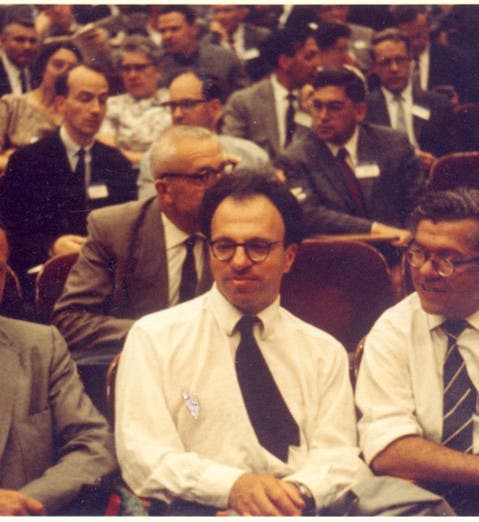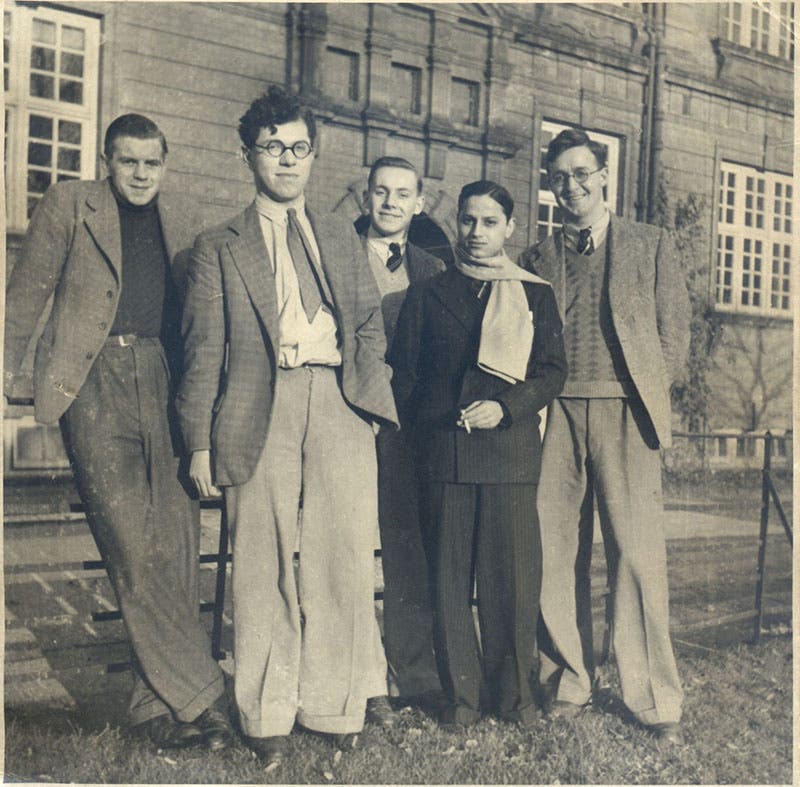Scientist of the Day - Fred Hoyle
Fred Hoyle, a British cosmologist, was born June 24, 1915. Hoyle was one of the great renegade 20th-century scientists, of which England seems to have more than its share. He is perhaps best known for an odd little fact – it was Hoyle who coined the term "Big Bang" for the cosmology that has reigned since the mid 1960's. Interestingly, he did so from the other side of the aisle, since this was a cosmology Hoyle wanted no part of. He had given a series of radio broadcasts for the BBC about astronomy in 1948, which were very popular, and in 1949 he followed that up with a radio talk on his own preferred cosmology, known as the Steady State hypothesis. In passing, he referred to the idea that the universe exploded from nothing as the "big bang" – he didn't even capitalize it. We can say this with certainty because the typescript of the broadcast survives and is included in a wonderful online exhibition about Hoyle at St. John's College, Cambridge. Hoyle's Steady State alternative was formulated with two colleagues, Thomas Gold and Herman Bondi, who can be seen, with Hoyle at the right, in an often-reproduced photograph, here tinted (first image). Because the Big Bang hypothesis was proposed by George Gamow and colleagues in 1948 to account for the origin and relative abundance of the chemical elements, and because Hoyle rejected the Big Bang, he needed an alternative way of explaining where lithium and iron and such elements came from, and he found his crucible in the cores of giant stars. He and three colleagues – Margaret and Geoffrey Burbridge, and Willy Fowler – published a very famous paper in 1957 called "The synthesis of the elements in stars", in which they showed how the conditions in stellar interiors would be conducive to cooking up hydrogen and helium into carbon and oxygen and all the rest of the heavy elements. The paper is so well-known, and so often cited, that it has a short-hand designation, B2FH, wrought from the author’s last names, and pronounced "B-squared-F-H", where Hoyle is the "H". It is interesting that Gamow turned out to be right about the Big Bang and wrong about the origin of the elements, while Hoyle also batted .500, since he was wrong about the Steady State hypothesis but ever so right about elements forming in stars. The eccentric Hoyle emerged later. He rejected the idea that life emerged on earth from organic molecules and preferred to advocate "panspermia," the notion that life came to earth from space. He spent some years debunking Archaeopteryx, the famous fossil "first bird," which Hoyle claimed was a fake, in spite of overwhelming evidence in favor of its authenticity. He proposed that flu epidemics were related to sunspot cycles, because when solar activity was at a minimum, the flu virus could then make its way to earth from outer space. When Antony Hewish received the Nobel Prize in 1974 for the discovery of pulsars, Hoyle publicly ripped the Nobel Committee for giving Hewish the award and not including his graduate student, Jocelyn Bell, who had actually made the discovery (here Hoyle was being not so much eccentric as undiplomatic, since he was absolutely right to be critical of the omission of Bell). Hoyle's war with the scientific establishment may explain another odd Nobel Prize, awarded to Willy Fowler in 1983, in part for the discovery of stellar nucleosynthesis, as presented in B2FH. Hoyle was not included in the award, although he was the lead author. Perhaps the Nobel committee was flexing its muscles and demonstrating who calls the shots, and who doesn't, in determining Nobel prizes. Or who knows, perhaps someone on the committee had read Hoyle's science fiction novel, The Black Cloud (1957), in which scientists save the earth from an extra-terrestrial super-organism, while administrators and government men run around like babbling idiots.
Reversing the usual order of images, we include, for our second photograph, one that shows the undergraduate Fred Hoyle, second from left, since it is possible that the maverick scientist is already emerging. There is a statue of Hoyle on the grounds of the Institute of Astronomy at Cambridge where he worked for much of his career, and which he directed in the latter part of that career. Dr. William B. Ashworth, Jr., Consultant for the History of Science, Linda Hall Library and Associate Professor emeritus, Department of History, University of Missouri-Kansas City. Comments or corrections are welcome; please direct to ashworthw@umkc.edu.







